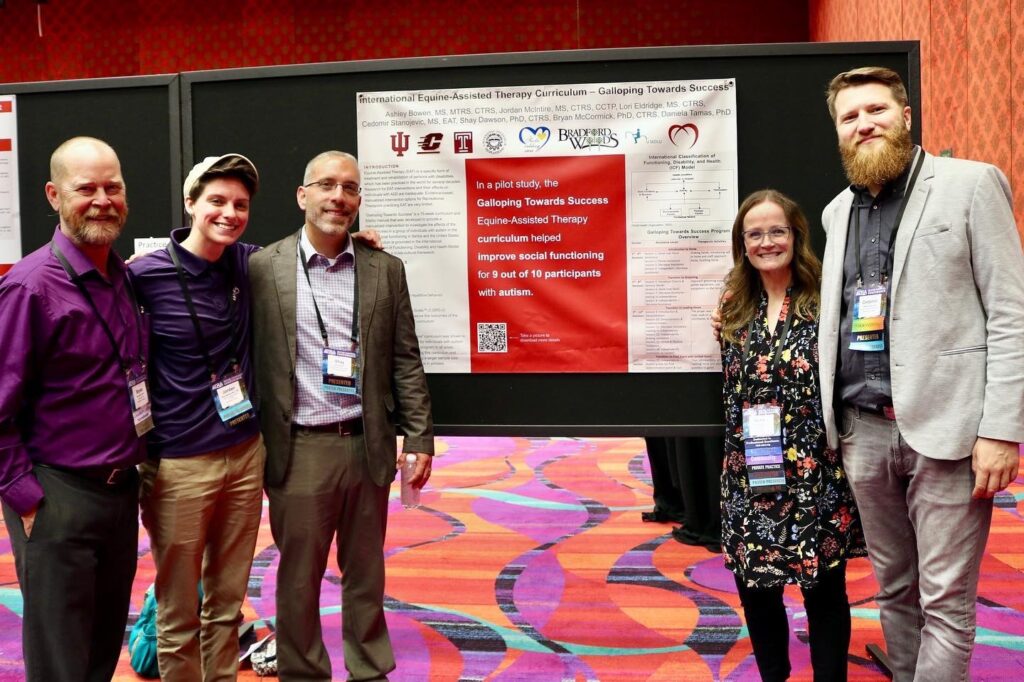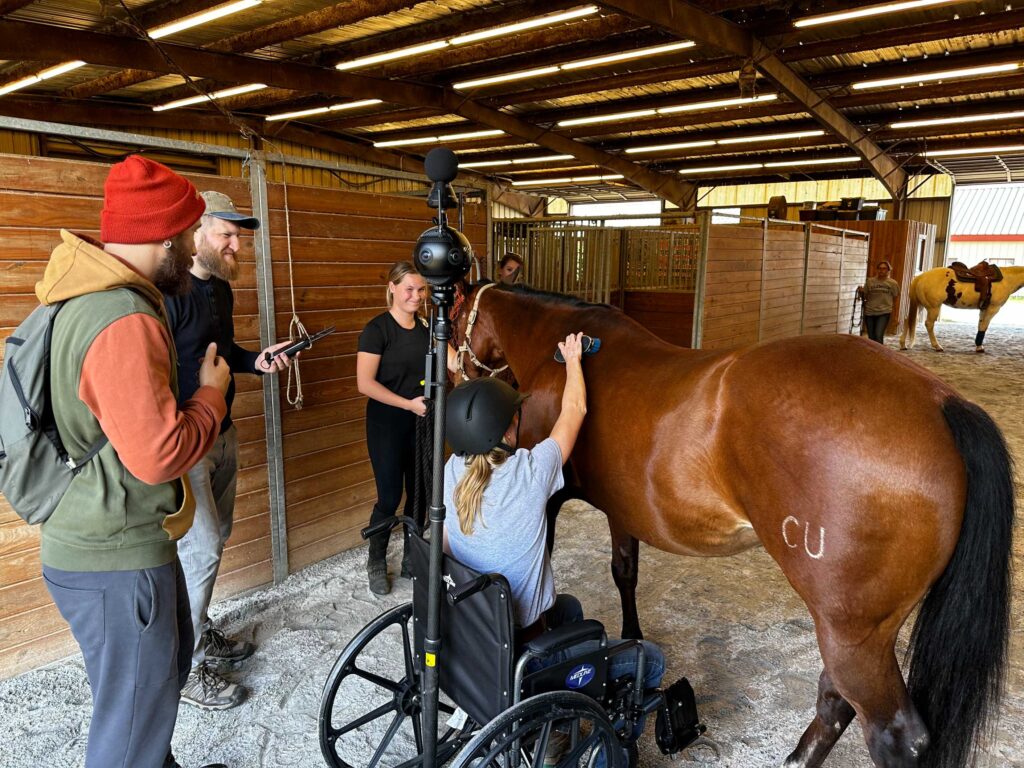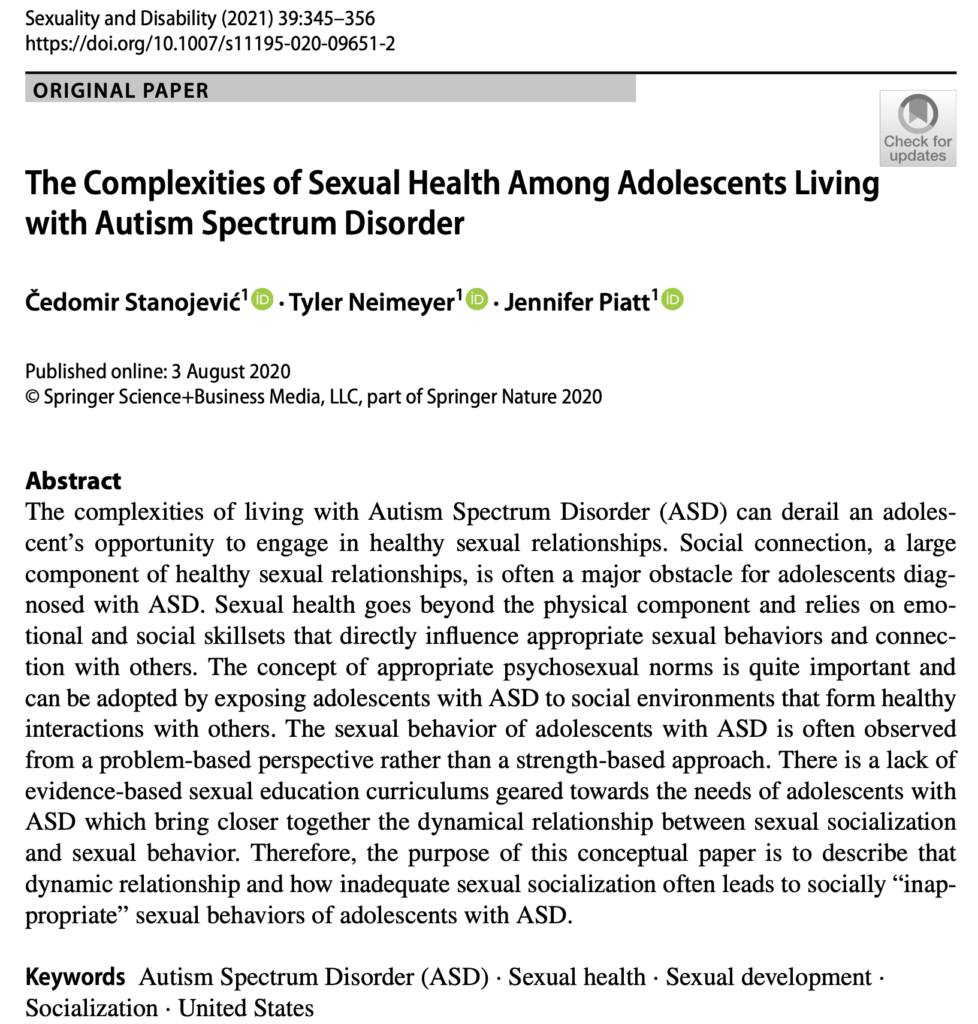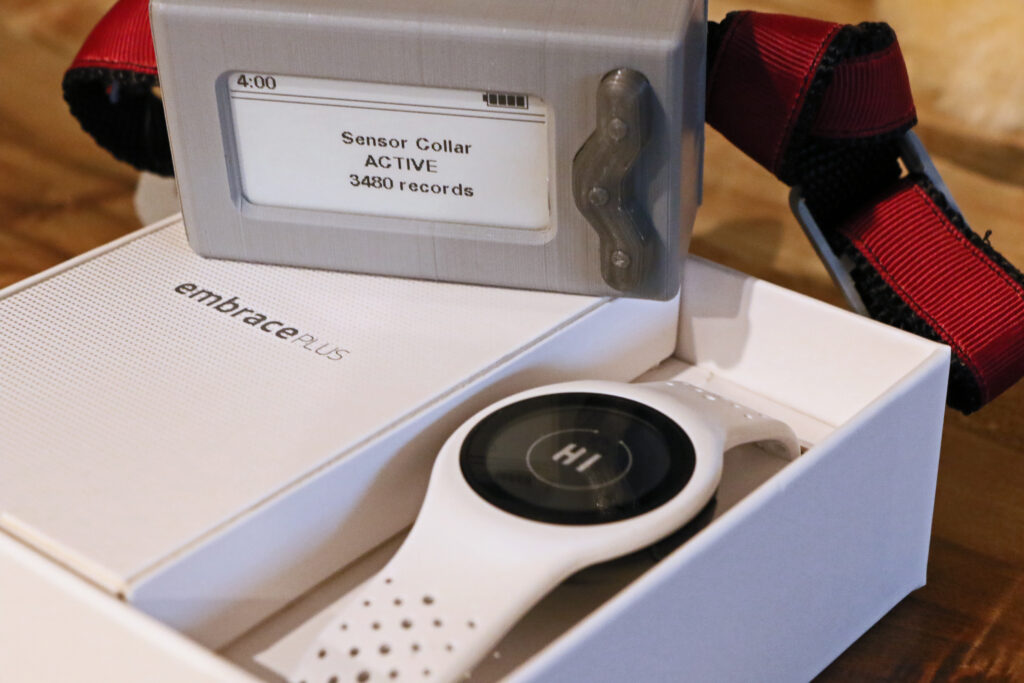Research
My ongoing research centers on interventions aimed at elevating the quality of life for individuals with disabilities, specifically exploring the impact of emerging technologies on health outcomes for this population. The core methodologies driving my investigations involve the amalgamation of behavioral observations and physiological recordings while identifying sampling strategies to collect relevant information from the participants. I utilize ecological momentary assessment (EMA) philosophy as the guide in research design and tend to collect participant interaction data in real-time while characterizing variations in behaviors within a participant over time. This approach minimizes susceptibility to biases associated with traditional observational methods, enhancing the sensitivity and reliability of findings. My interdisciplinary approach to research relies on collaboration with a diverse team of subject matter experts. Research contributions of such collaborative effort revolve around advancing Artificial Intelligence (AI)-driven Digital Health (DH) systems, with a specific emphasis on their potential in healthcare delivery and care management. These systems, comprising a fusion of technologies, AI, and physiological biomarkers, hold promise in supporting individuals with various health conditions. Within the broader DH spectrum, my focus extends to Digital Therapeutics (DTx), which represents a more targeted set of technology-enabled interventions designed to yield measurable therapeutic effects.
Artificial Intelligence (AI)-driven Digital Health (DH) systems
These systems, comprising a fusion of technologies, AI, and physiological biomarkers,
hold promise in supporting individuals with various health conditions. Within the broader DH spectrum, my focus extends to Digital Therapeutics (DTx), which represents a more targeted set of technology-enabled interventions designed to yield measurable therapeutic effects. DTx tools, including socially assistive robots (SARs), emerge as valuable assets within DH systems. The data gleaned from sensors onboard SARs can facilitate the identification of in-home behaviors, activity patterns, and the health status of patients remotely. By integrating robotic sensor data with other DH components and incorporating SARs into an Internet of Things (IoT) ecosystem, a comprehensive understanding of patient health outcomes can be achieved. Over the past five years, my team and I have dedicated efforts to design a DH system, yielding promising results. Preliminary machine learning outcomes show 75-80% accuracy in detecting specific interaction modalities between participants and robot agents. Utilizing deep learning (DL) and machine learning (ML) models, we have assessed in-the-wild data collected through robot sensors, demonstrating the capability to predict users’ cultural identity with approximately 95% accuracy.
Our ongoing study aims to integrate large-scale data from wearable devices with biomarker data to model stress changes in individuals with Autism Spectrum Disorder (ASD) during SAR interactions. The anticipated ML models will provide insights into the impact of SAR exposure on biomarkers, potentially predicting treatment outcomes and effective intervention phases. The next phase of our research aligns with broader DH and DTx community initiatives. Our goals include expanding DTx studies for more robust and generalizable results, identifying IoT-enabled DTx “active ingredients,” and integrating these ingredients with various platforms (e.g., mobile phones, wearables, smart home devices, virtual reality). This integration aims to democratize access to beneficial therapies for patients across diverse cultural and geographic contexts.

Socially Assistive Robotics (SARs)
As the healthcare field continues to adopt emerging technologies to improve health outcomes, it becomes important to better understand the implementation and adoption of such technology in the field of recreational therapy (RT). One area of interest is socially assistive robotics (SAR), a subset of the larger field of robotics focused specifically on social interaction and the health/cognitive benefits thereof. When SARs are paired with RT, it allows for cutting- edge technology to be applied within the practice, thus augmenting existing RT therapeutic techniques. This application produces an ideal environment for the incorporation of emerging technology into the healthcare field.
SARs and Ecological Momentary Assessment (EMA)
SARs hold great potential to revolutionize the way we manage chronic illness outside clinical settings, both as a social support tool and as a novel form of remote monitoring via robotic sensors. However, one of the major challenges with deploying SARs and making use of the collected sensor data is having “ground truth” labels so that machine learning algorithms can be developed to classify multi- modal sensor patterns into discernible activities. This challenge is two- fold: understanding the humans’ behavioral patterns, as well as using the sensor data to create more adaptive interactive behavior in social robots. Utilizing the EMA approach my research team and I managed to capture this information and tie it to the robotic sensor data. In the larger ongoing study, we will be aiming to link obtained information back to patient health outcomes. Our preliminary results suggest the potential for the EMA approach in social robotics to understand real- world human- agent interactions, as well as many implications for the future related human- robot interaction challenges and health care practices
The Inclusive Adaptive Sport Program on a College Campus: Changing the Narrative
The college experience goes beyond what occurs within the classroom and encompasses developing a sense of inclusion within the college culture through engagement in extra- curricular activities with peers, including recreational sports, leagues, and clubs. Post- secondary education fosters personal independence, self- determination, community integration as well as the overall quality of life. These benefits of post-secondary education are the same for both individuals with and without disabilities, unless the experiences offered are inequitable, or omitted for those living with a disabling condition. Inclusive wheelchair basketball can shift the perception of the wheelchair as an identifier of disability to a piece of sports equipment. Benefits of involvement in inclusive wheelchair basketball include increased public awareness, growth of the sport, and an increased sense of competition.


Equine Assisted Therapy (EAT) and Autism Spectrum Disorder (ASD)
The therapeutic effect of animals is derived from a human- animal bond in which animals are viewed as non- judgmental social actors and may provide a transitional object to meet social needs. EAT has been shown to improve communication skills, social interaction behaviors, motivation, and the general severity of ASD symptoms. The cross- cultural International Research Collaboration (IRC) between U.S.- based institutions – Indiana University, Bloomington, Central Michigan University, Temple University, and the University of Novi Sad, Serbia was initiated in 2016. One of the main goals of this IRC was to examine a cross- cultural efficacy of EAT intervention titled, Galloping Towards Success (GTS). GTS, a 15- week curriculum and a fidelity manual, was developed as two of the deliverables of the IRC. The curriculum was developed to investigate the effects of the EAT activities in individuals with ASD in the age range of 15 to 30 years old. The pilot study was completed at sites in Serbia and the United States respectively and has provided an opportunity to compare effects of the curriculum cross- culturally. The curriculum has shown initial positive results in 9 out of 10 clients from both cultures along with large effect sizes in both groups. GTS targets improvements in the social skills to reduce barriers to participation in society within the respective local communities of participants, e.g., leisure pursuits, school, vocational, family, etc. This productive collaboration lasted for four years and has resulted in three peer- reviewed publications and several presentations in diverse scientific venues. Details of this particular IRC and the framework that provides step- by- step guidelines for initiating, maintaining, and finalizing an IRC are published in the Therapeutic Recreational Journal (Stanojevic et al., 2022; McKissock et al., 2022; Dawson
Research and Advocacy
The Complexities of Sexual Health Among Adolescents Living with ASD
Social connection, a large component of sexual health, is often a major obstacle for individuals diagnosed with ASD especially during the adolescent years due to the difficulty of identifying the intentions and emotions of others. Sexuality, relying on an emotional and social skillset that adolescents with ASD often struggle with may directly influence sexual behaviors and how human beings connect with others. Physical changes and sexual interests are emerging at the same rate among individuals with ASD as well as their typically developing peers, thus, the sexual health discussion regarding the adolescent population on the spectrum must be addressed. Nevertheless, the sexuality of people with ASD is often overlooked or considered taboo by the general public (Stanojevic et al., 2021). In a conceptual paper published in Sexuality and Disability journal, my research team and I have described the correlation of social connectedness and sexual health, defined three major components of sexual health (socialization, behavior, and selfhood) related to adolescents diagnosed with ASD, as well as provide a better understanding of the dynamical relationship between sexual behavior and sexual socialization. These three concepts, individually and collectively, lead to discrepancies within the sexual health of the adolescent population diagnosed with ASD. Furthermore, we have provided evidence- based opinions on how inadequate sexual socialization often leads to socially “inappropriate” sexual behaviors of adolescents with ASD, resulting in continuous alienation of these individuals from society.




